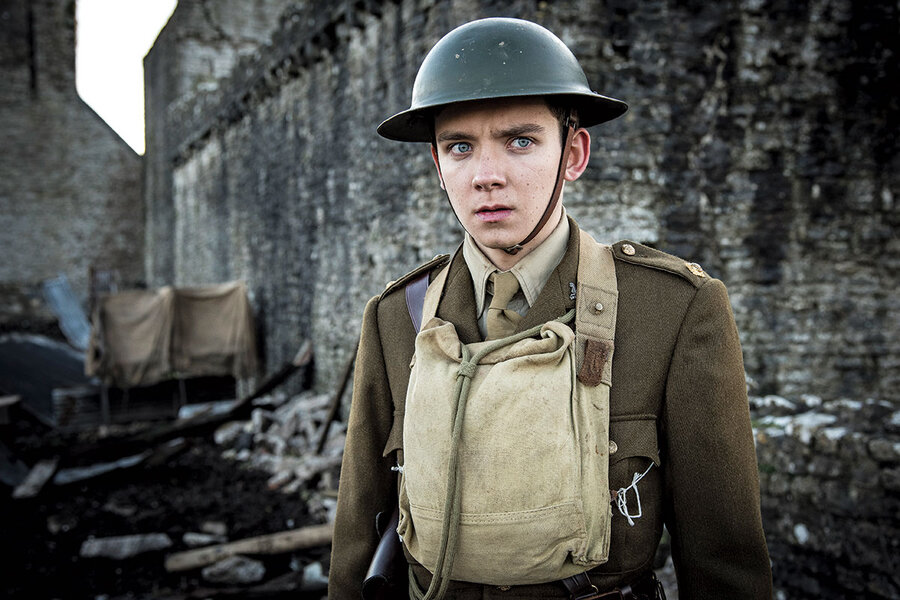'Journey's End' shows horror of war, spirit that transcends it
Loading...
I did not expect to be as moved by “Journey’s End” as I was. Based on the 1928 R.C. Sherriff play about a battalion of doomed British soldiers during World War I, it’s a prime example of what is commonly referred to as a “warhorse” – a piece of material that has been so often performed and worked over that it practically renders criticism superfluous. Sherriff’s play has been periodically staged and filmed since its inception, including a celebrated 1930 adaptation directed by James Whale shortly before he made “Frankenstein.” Was there need of yet another version?
Yes, as it turns out. There is a good reason why certain warhorses still ride the range. The play (which Sherriff also novelized with Vernon Bartlett) is such a sturdy contraption that, as directed by Saul Dibb and written by Simon Reade, it transfers almost seamlessly to the screen. The power of the material survives because the anguish and heroism inherent in the story are enduring. So, alas, is war itself.
Set in March 1918, at a time when the German Army is poised to launch its Spring Offensive, “Journey’s End” focuses almost entirely on the vastly outnumbered C Company lying in wait in a muddy trench in northern France. The soldiers and officers know in their bones that they are on a death mission, and the air is thick with foreboding. Into this purgatory arrives Raleigh (Asa Butterfield), a fresh-faced enlistee just out of basic training, who wants to join C Company because he is smitten by the excitement he feels awaits him on the front lines and also because his former schoolhouse monitor, Captain Stanhope (Sam Claflin), whom he idolizes and who is wooing his sister, is in charge.
Brought in as a junior officer, Raleigh is warned about Stanhope, in advance of reuniting with him, by Lieutenant Osborne (Paul Bettany), a former schoolteacher whose ability to rise above the impending terrors is practically a state of grace. Stanhope, the boy is told, is not the same man he knew in school, and sure enough, when the two meet, Raleigh is almost instantly rebuffed by him. After three years on the front, Stanhope is a broken man who resorts to the ever-dwindling supply of whiskey to muffle his fright. It’s also clear that he dreads having his sorry state communicated to Raleigh’s sister.
For almost the entire movie, we are in the trenches right alongside the battalion. The officers’ quarters, such as they are, are dank and filthy dugouts; the meals, concocted from the few available rations, are often consumed by candlelight.
Essentially we are looking at a stage set, but I never felt hemmed in by the staging. Dibb does a remarkable job of singling out the half-dozen or so officers so that we seem to experience their actions in something like real time. Each man is sharply characterized, and the performances are expert, right down to the cook (Toby Jones). Since the drama’s focus is primarily on the officers and not on the soldiers shivering in the trenches, the class divisions in the military arise naturally from the material without the need for a lot of editorializing. What unites everyone is the expectation that, regardless of their station in life, death will soon level them all.
There is nothing bracingly original about “Journey’s End” – it is not the cinematically lacerating experience that, say, Stanley Kubrick’s World War I classic “Paths of Glory” is – but within its familiar confines, it’s a triumph. It brings out the valor in the famous British stiff-upper-lip reserve in a way that makes you resoundingly aware of the roilings beneath that reserve.
Most expressive of this are the scenes between Raleigh and Osborne, who indulges the boy’s distress as they both prepare to lead a raid on the nearby German encampment. Osborne, beautifully played by Bettany, knows what awaits them; in the scene just before, he carefully lays out some keepsakes intended for his family in case he does not return. But his care for Raleigh has a nobility to it and a delicacy that are fortifying even in the face of tragedy. “Journey’s End” does justice both to the horrors of war and to the spirit that can sometimes, somehow, transcend it. Grade: A- (Rated R for some language and war images.)





